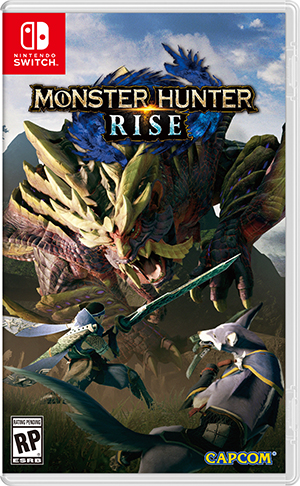Few games can match Monster Hunter when it comes to their core loop. True, there’s that risk of saminess when you encounter familiar monsters in familiar ways, but that familiarity persists for a reason. The series is its own kind of phenomenon in Japan, with several imitators following with their own “hunting” games once it was clear the formula works.
The rest of the world has been playing catch-up in that respect, with 2017’s Monster Hunter World finally bringing it to mainstream prominence. It is now Capcom’s best selling title by a Rathalos sized margin, and in a world with Street Fighter and Resident Evil ports on every platform imaginable that’s truly saying something. But what about all us handheld hunters?
See, Monster Hunter’s prominence can reasonably be attributed to how well it works on portable consoles. The PSP (remember that thing?) was the first standard, but soon the series would find a recurring home on the Nintendo 3DS. The fourth generation of titles would effectively skip home consoles altogether, save a Switch port of Generations Ultimate that wouldn’t come to America for some time.
As pleasing as it was to see World do as well as it did, I couldn’t help but be worried. As I and plenty more players racked up hundreds of hours, would Capcom see this as the new home for the series, leaving portable consoles behind?
Thankfully, those concerns were completely unfounded. I can comfortably say Monster Hunter Rise sets a new standard for the series on handhelds, taking it to new heights on Switch. Some elements have been carved away since Iceborne, but what’s here is still satisfying and stands an equal part of the franchise’s fifth generation.
Basics of the hunt
For anyone not so familiar with Monster Hunter, I’ll make this descriptor as brief as possible. You take up one of over a dozen hefty weapons and face off with creatures that can range from dinosauric to kaiju in size. Doing so allows you pieces of their very flesh and bone to take back home and craft into new weapons and armor, letting you push yourself further and further to more dangerous quarry.
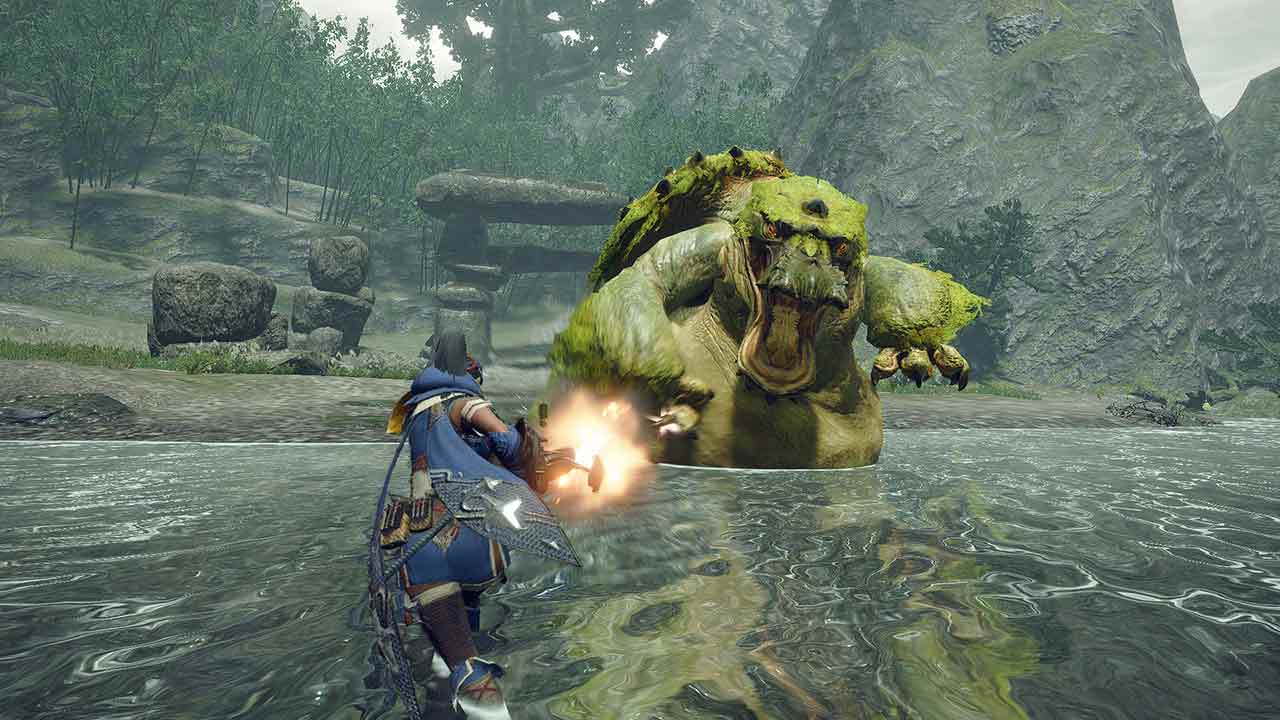
This is “the loop” I previously mentioned, but there is so much more going on at every turn of it. Each weapon is unique, with a full moveset. Some of those have added elements, like ammo types and allied insects. As you hunt monsters you can break parts of their bodies for bonus materials, or even sever their tails with a culminating, cathartic slash. Sometimes you’ll want to capture a monster instead, or hunt more than one, or something unexpected and powerful will invade just when you find your flow.
What could be an overwhelming amount of information and mechanics is doled out at an even pace over Monster Hunter Rise’s single player story. Nothing ever forces you to deep dive into all these interwoven systems, either, but you’ll encounter so much it’ll be hard to keep your hands and thoughts away. Planning out what armor set you want or getting a lay of the game’s areas are their own kinds of fun that prop up the hunts themselves, giving these bombastic confrontations all the weight they deserve because of how much effort went into preparing first.
Welcome to Kamura Village
Up to this point I could be describing nearly any title in the series, but now it’s time to dive into what makes Monster Hunter Rise such a strong entry. As mentioned briefly already, Rise separates its single and multiplayer content unlike its predecessor and more in line with the series’ past. This is an interesting change (or unchange) and took some readjusting to due to the lopsidedness of their difficulties.
The solo Village quests, as they are called, have you as an up and coming hunter in the feudal Japan inspired Kamura Village. This already gives the game an identity and aesthetic, with NPCs and starting armor embracing it. Soon you’ll be encountering the game’s new monsters, which push this theme further by being based on various yokai.
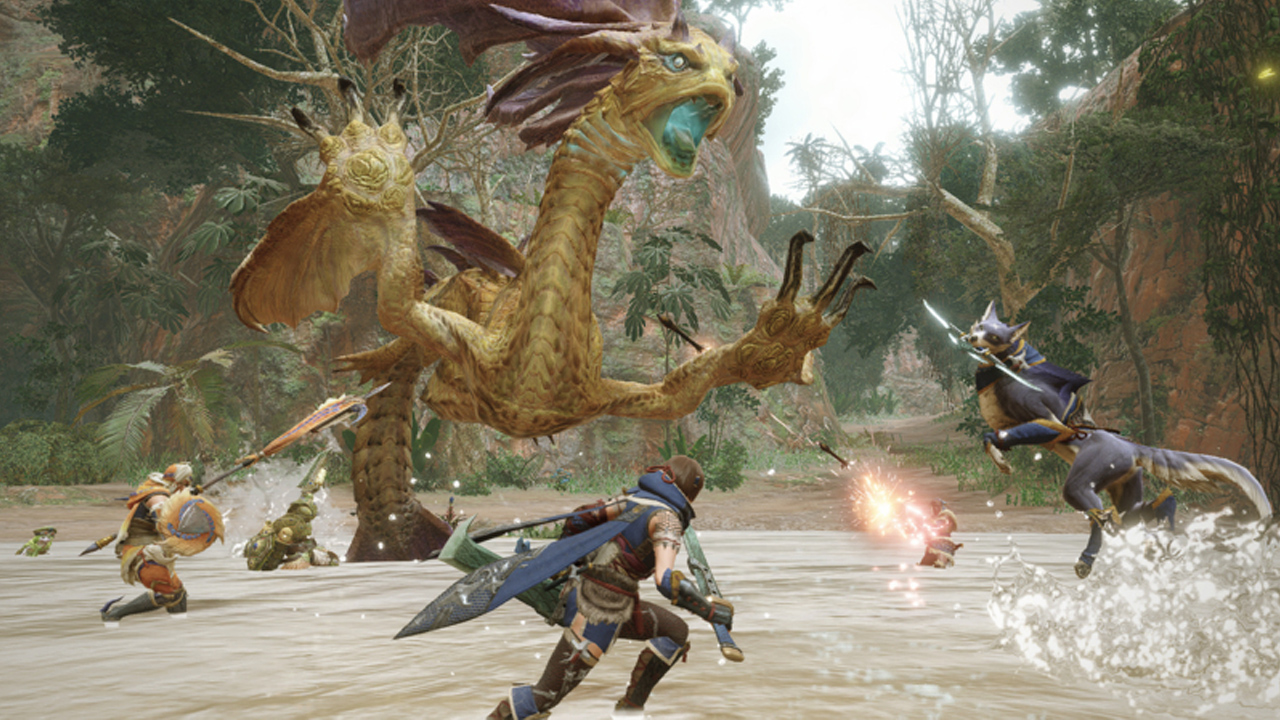
These new monsters manage to, for the most part, fit right in with the returning species. There’s a bit more variety in type as well compared to World, with bear-like beasts and serpentine leviathans coming back. Of the newcomers, Goss Harag and flagship Magnamalo left the strongest impressions. Not every hunt is so enthralling that I’d want to face off with the monster again and again, but as a whole it’s a serviceable lineup of creatures that will continue to grow with free updates in the future.
I will say, the game’s solo content felt particularly easy. That may be thanks to how much time I regularly put into the last game, but I was able to complete the entirety of it with only a single bout of armor improvements. This took some of the edge off compared to World, which instead presented a single pool of quests without distinction between solo and multiplayer and scaled them accordingly.
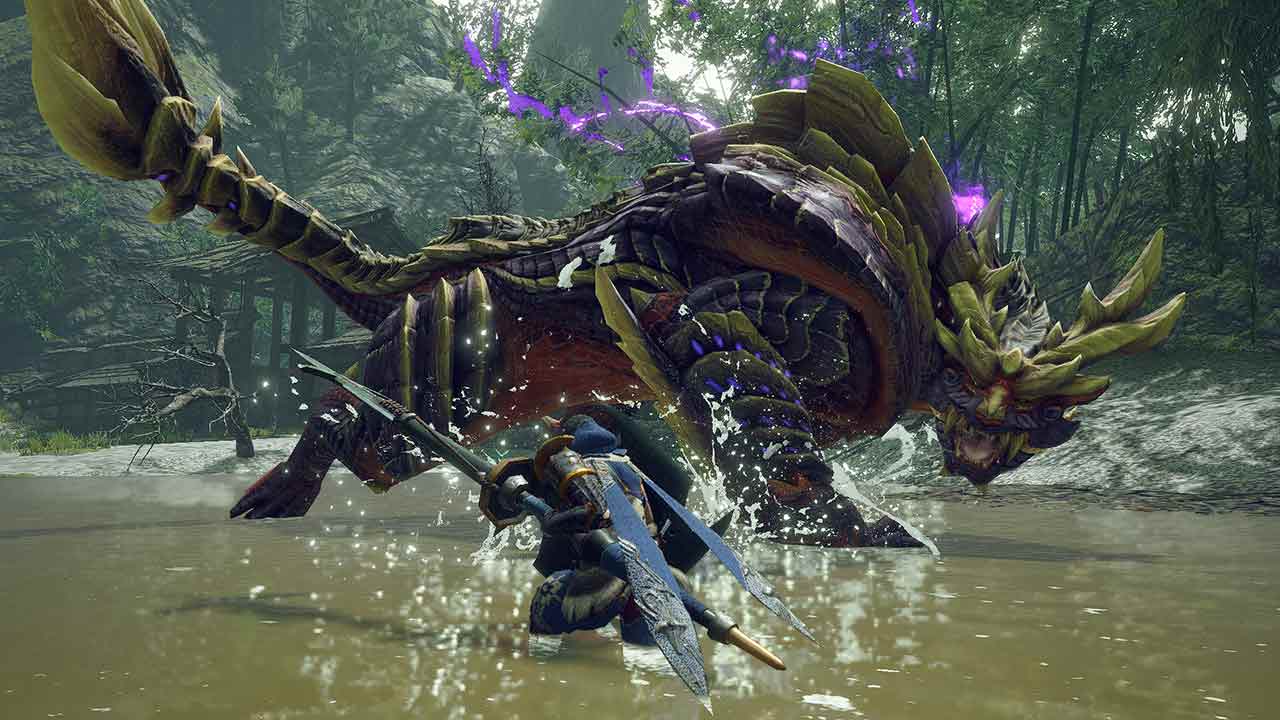
For some that might be a blessing, as it will let them breeze through to gather materials and access to better equipment in order to take on the multiplayer Hub campaign. This felt more like the Monster Hunter I was accustomed to, where a couple mistakes can have you carted back to camp and every success feels earned. Nothing stops players from diving right into Hub quests either, with their higher difficulty being the only gate in place.
Facing down The Rampage
Both of these questlines have their own narratives as well, though they’re hardly engrossing plots. They exist to move you from hunt to hunt, each concerning different oddities descending on Kamura and more or less the routine life of a hunter. Fitting into both are an occurrence called The Rampage, where hordes of monsters encroach upon your settlement all at once.
This is the game’s “gimmick map” mode, where your typical techniques won’t cut it and you have to instead use heavier duty weapons. You’ll be tasked with protecting gates into Kamura, doing so by placing ballistae, cannons, and more that can be both automatic or manually controlled. This translates to moving from one spot to another in order to have the best vantage point against multiple monsters, using techniques and armaments (and even some special allies) to fend them off before they come crashing in.
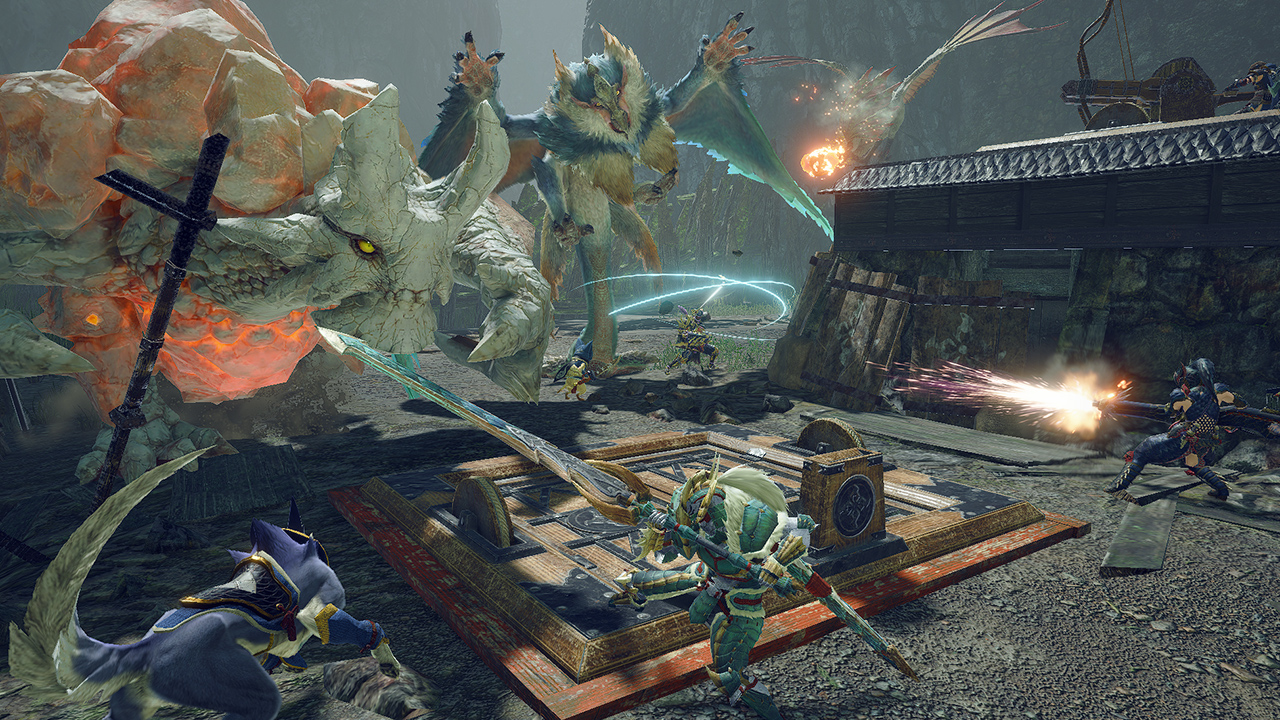
In all honesty, I wasn’t a fan of Rampages. They lack the elements of the series that I enjoy most, that being the faceoff between hunter and monster, though that’s likely the point. Any time one would be necessary to clear before progressing to new monster encounters I’d catch myself groaning. They do have their benefits, those being materials to improve your weapons, and even powerful Apex variants of monsters that make a strong impression when they’re introduced. As a note, though, I only took on Rampages by myself during the review period for the game. I can definitely see them at least being less stressful and perhaps even more enjoyable with some company manning turrets and minding monsters.
Wirebug wonders and a new best friend
It’s Rise’s three other big additions that feel the most forward-thinking for the series, though. You’ll encounter the first of these right in the character creator – the Palamute! These Canyne companions will accompany you and Palicoes on hunts, and while the Felynes are still the more resourceful of the two (with various specialties like healing or trapping), Palamutes are more persistent attackers and a new, pettable mode of transportation.
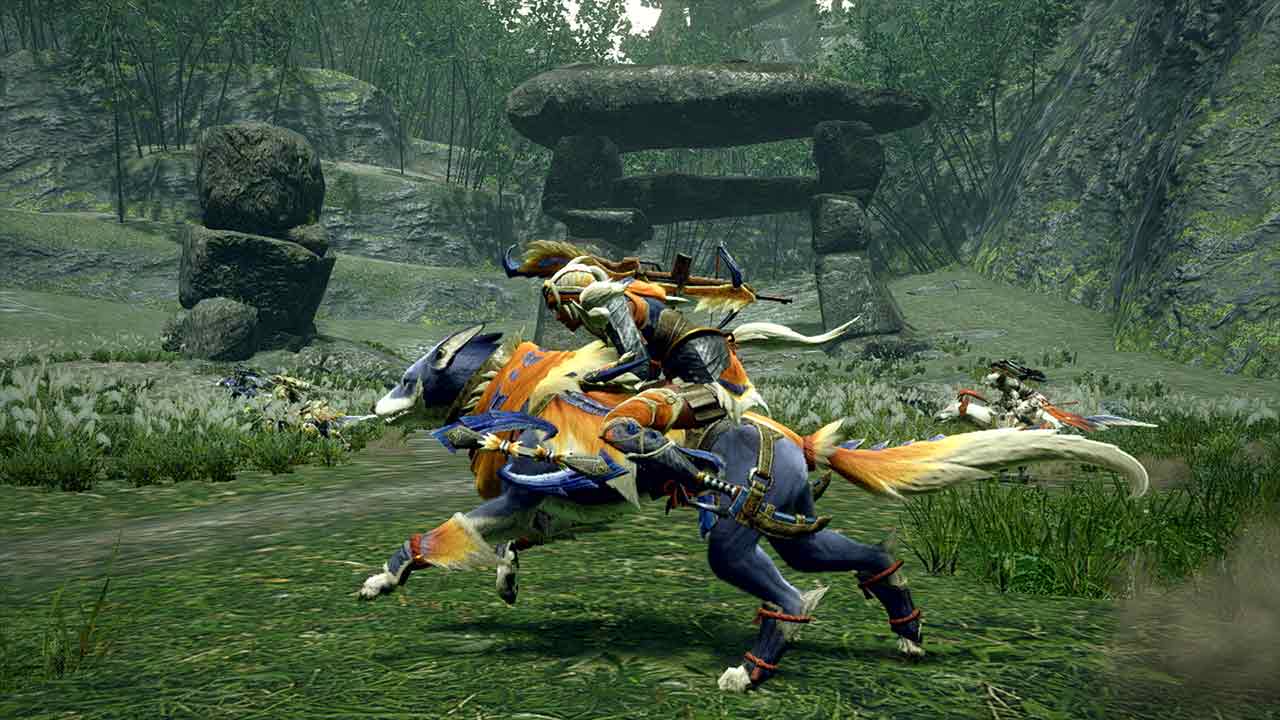
Being able to ride your dog is a game changer, making the trek through maps quicker and less draining on your ever important stamina. They also allow you to use most items while mobile, taking out those “stop and sharpen” moments that pause the flow. I can’t tell you how many times my life was saved thanks to a quick whistle to my goodest boy letting me pop a potion while creating some breathing room between me and a monster.
The most significant addition of all has to be the Wirebug, though. You now have a combination zipline/grappling hook that allows you to traverse maps in new ways, most notably with added verticality. It is called Monster Hunter “Rise”, after all. Hunters from Kamura are also adept wall runners, letting you dash on your dog before leaping up a cliff, running up its face, and Wirebugging across gaps or to new heights. Getting around quickly and efficiently is easier than ever no matter where your destination is. They’re welcome additions in that respect, and they end up removing some of the tedium that even World couldn’t.
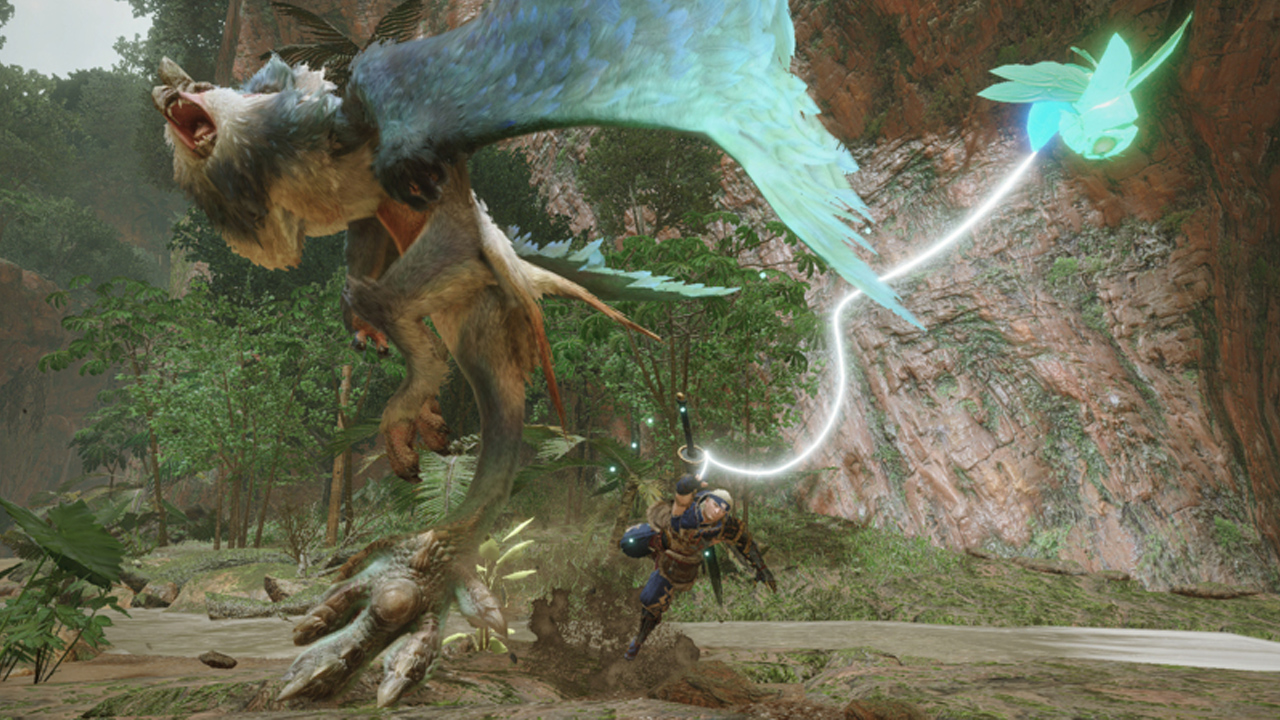
Wirebugs aren’t just for exploration, though. In combat they can be used to make quick evasive or approaching movements, and also grant every weapon type new and unique attacks. Being able to punch your Hunting Horn into a monster’s face before jamming out to send reverb straight into their skull along your Wirebug’s thread is never not satisfying, and other Silkbind attacks reach similar levels of spectacle. Others are more utilitarian, like giving shield-based weapons powerful counters or adding aerial attacks to historically grounded weapons.
Laying into monsters with these Silkbind attacks have another added benefit beyond looking cool and giving you more options. With enough of these, you can put the monster in a mountable state and use the most satisfying new addition of all: Wyvern Riding.
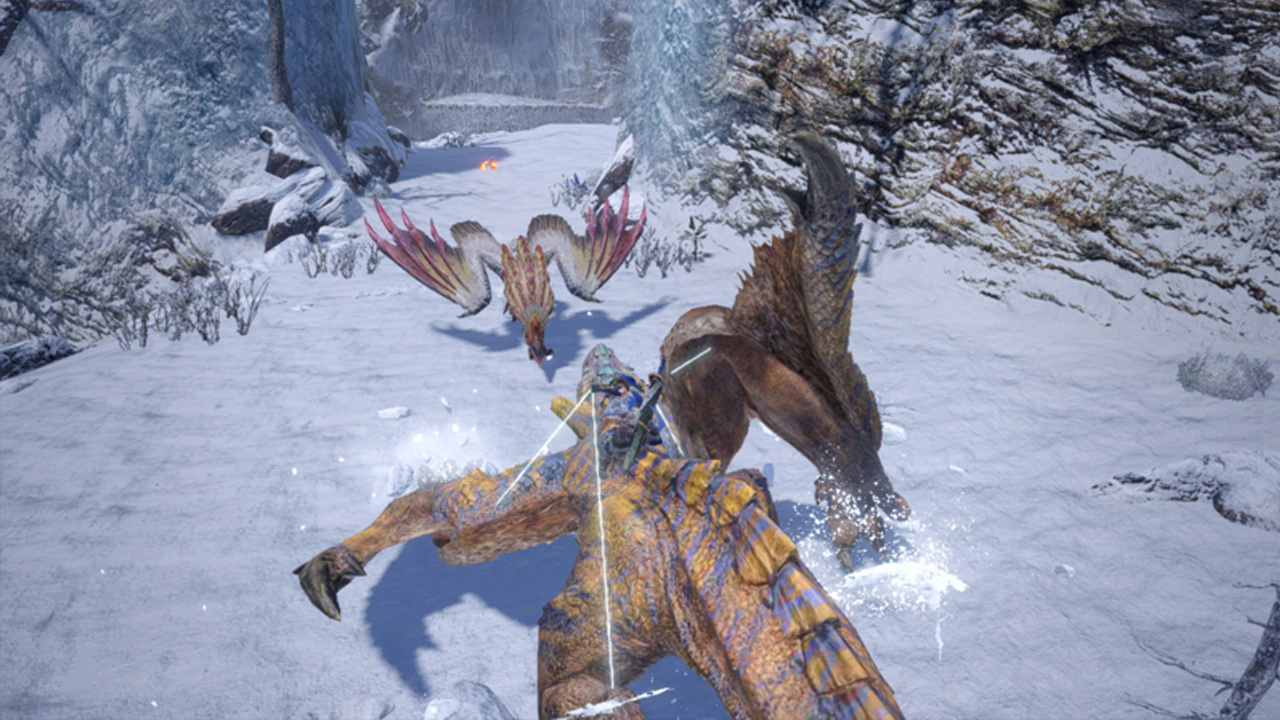
Instead of previous games’ mounting system, where you’d chip away at a monster with scratch damage before pulling off a big technique and toppling it, Wyvern Riding expands the concept significantly. Now you use your Wirebug to puppeteer the monster, giving you access to some of their attacks. I actually cheered when I used a Rathian flip for the first time, and similarly notorious tools of these forces of nature are now at your disposal instead.
There’s practicality alongside that satisfaction, since wielding a monster is bound to be more powerful than wielding a weapon. By seeking out other monsters on the map you can lay into potential prey, or launch your current ride into that monster to then mount it instead, letting you get back to attacking your prime target. Approaching this mechanic and these instances well can make it rain shiny monster part drops, and present some of Rise’s greatest spectacles via powerful, monster-specific finishing moves.
Exploring other changes
Though it doesn’t offer any new weapons (and even loses a few techniques thanks to no Slinger, Crush Claw, or Hunting Arts) Rise does expand on your arsenal beyond Silkbinds. Switch Skills let you swap out certain attacks or Silkbinds for others, giving you a degree of customization beyond equipment choices.
The most subtle but perhaps most welcome change is to endemic life. Instead of just sort of being there, seeking out and picking up these creatures can have immediate and tangible benefits to a hunt. Some apply buffs, both permanent and temporary, while others increase your item potency or can apply blights to monsters. It isn’t as big a game changer as auto-crafting was previously, but it does add more value to exploration and gathering for those who enjoy those aspects of the game.
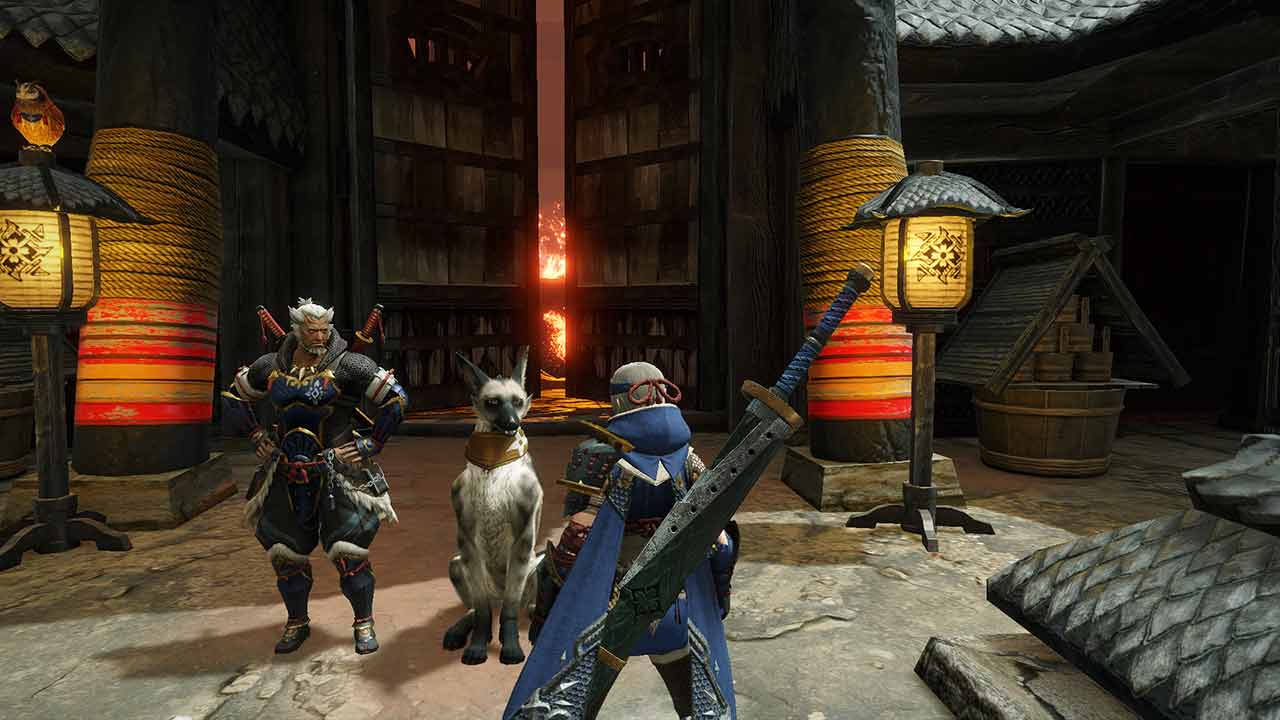
They’re worth enjoying too, as Rise’s five maps are full of findables. Though they’re smaller than what World offered and perhaps more straightforward, they get the job done while remaining one large environment each instead of sectioned off areas. I assumed that style might lead to long loading times, but thankfully the game isn’t too bad in that respect. I do miss environmental elements that can be used against monsters, though at least Turf Wars can still take place thanks to up to three large monsters on a map still being possible.
Visually, things aren’t as detailed as its predecessor both for monsters and the environments. That said, being built specifically for the Switch leads to Rise being more than satisfactory. There’s a noticeable improvement when playing docked, but handheld is just as smooth an experience from a gameplay perspective. I experienced no slowdown even playing undocked online with a full hunting party, which included at least one player in the UK. Capcom once again shows that the RE Engine is one of their greatest, current assets.
The hunt is on the go again
The entirety of this review so far can be applied more or less to the entirety of Monster Hunter Rise, but there’s one important facet that absolutely deserves its own section. Thinking back on my ample time with the game so far, all my greatest memories came specifically from multiplayer. This is not only what elevates Monster Hunter from an addicting action RPG to a must-experience series, it’s done exceedingly well on Switch.
How else would I have enjoyed ganging up on a poor, hopeless Great Baggi with three other players? Or that time I joined a quest in progress only to ride up on my Palamute, only to vault off and slash a Magnamalo square in the face just as a Rathian appeared, letting me mount the two back-to-back as my new allies gathered up materials and cut into the prone victims? Sure you can swap stories about how much time you spent grinding your latest Gunlance, but it’s more rewarding, enjoyable, and exciting with company.
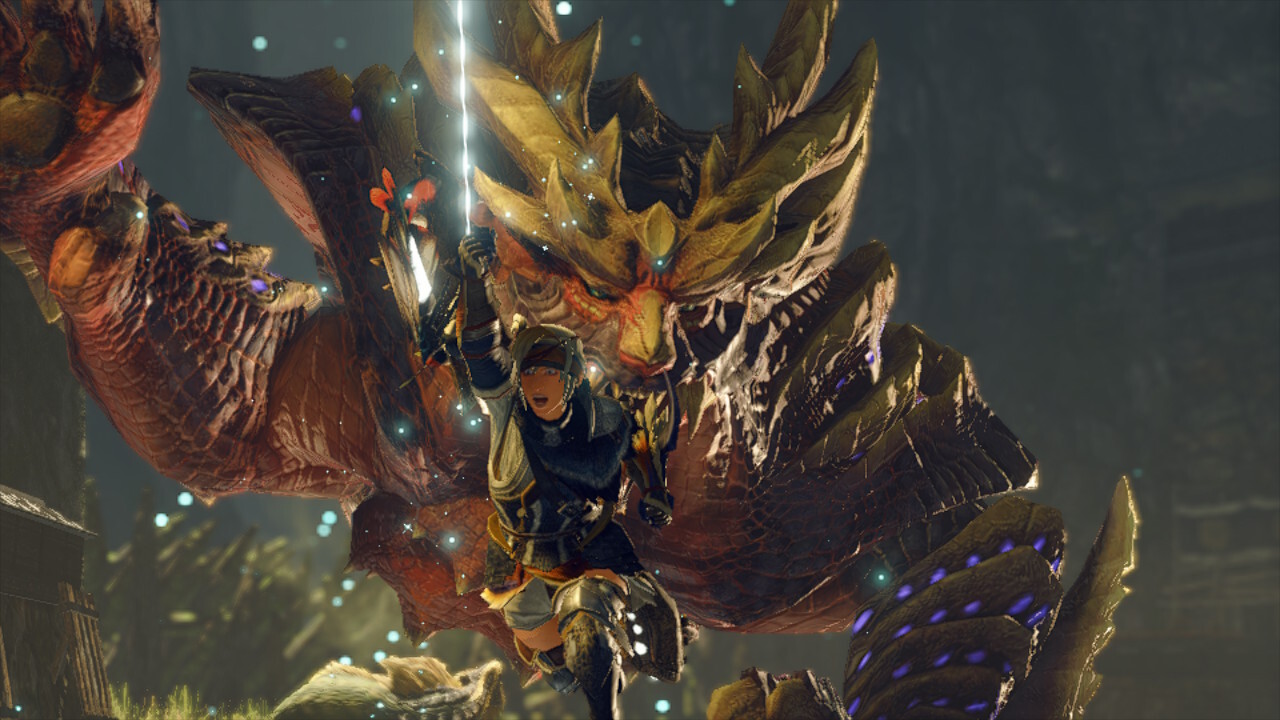
Rise is a slight step back on the online front from World, though. As mentioned before quests aren’t in one, unified pool. So you have to get yourself online via an NPC outside the Hub, and then make sure everyone is specifically looking at Hub quests, which isn’t particularly difficult but it ultimately doesn’t have the same ease as the previous game’s system. Likewise I wouldn’t recommend the Switch Online App as a first choice for communications, especially with third party applications like Discord being readily available.
For those minor inconveniences, you do gain one very important benefit. Local play with other hunters in person is back to being a possibility that doesn’t involve lugging a PlayStation 4 to a friend’s house (the system doesn’t even have a handle, come on). The Switch is a natural fit for Monster Hunter, and my new favorite home for the series. While I was unable to test this particular aspect during this review period, I did have a chance to play the recent Monster Hunter Rise demo with a friend locally and found it to work flawlessly.
While it is possible to enjoy Monster Hunter (and Rise in particular) as a lone ronin of a player, I do encourage you to either party up with other players regularly or to have a group of friends or fellow hunters with the game. Also be sure to have plenty of time on hand, as it took me about thirty hours to get from low rank to high rank in Hub. This is arguably when the game “opens up”, but I never felt bored or only going through the motions leading up to that point. Village quests are on a different sort of framing so you can still encounter some more notable monsters there, but it’ll still only be the beginning of what Rise has to offer now and in the future.
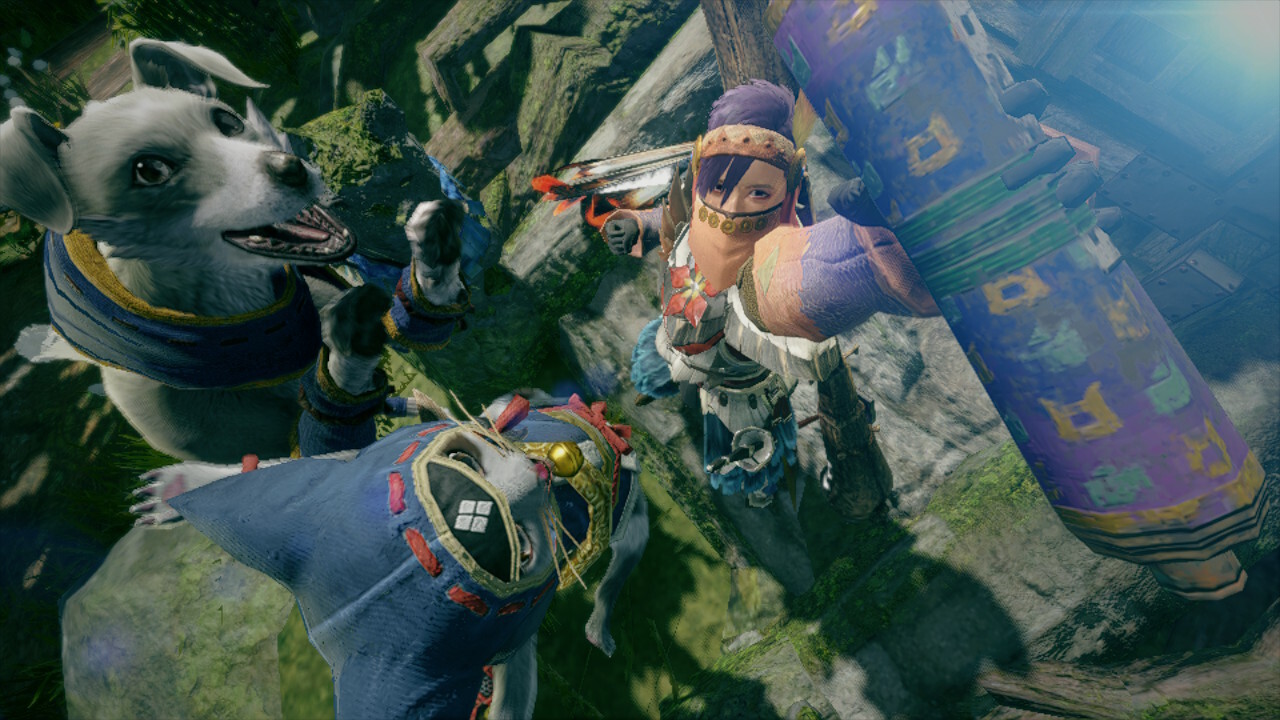
For a certain type of player, Monster Hunter Rise is a Switch essential. If you’re both patient and attentive, and can handle massive opposition in the face of dedication, you will thrive. Though it can feel like taking on an iceberg with a butter knife at times, those behemoths are whittled down eventually and those moments can feel utterly glorious.
As a fan of the series I was impressed nearly every step of the way with how the dev team maintained nearly all of what made World such a step forward while still offering up new ideas. Getting to the good parts, those face offs with new and fan-favorite monsters, is easier than ever thanks to the new traversal options. This isn’t another massive leap, nor is it a concession for a less powerful system. Rather, it’s a refinement that brings back handheld portability while setting its own identity.
If you were ever curious about why Monster Hunter was such a big deal, this is a game worth keeping an eye on and experiencing for yourself. If I’ve enjoyed it this much with a fairly shallow pool of fellow players online, I can only imagine what awaits when everyone gets the chance to Rise to the occasion.
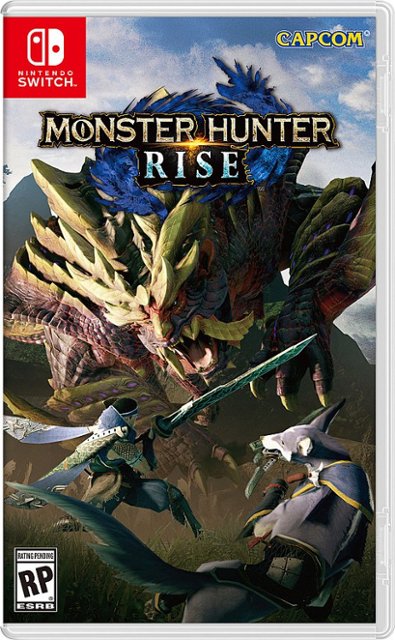
System: Nintendo Switch
Release Date: March 26, 2021
Categories: Action
Publisher: Capcom
Developer: Capcom
